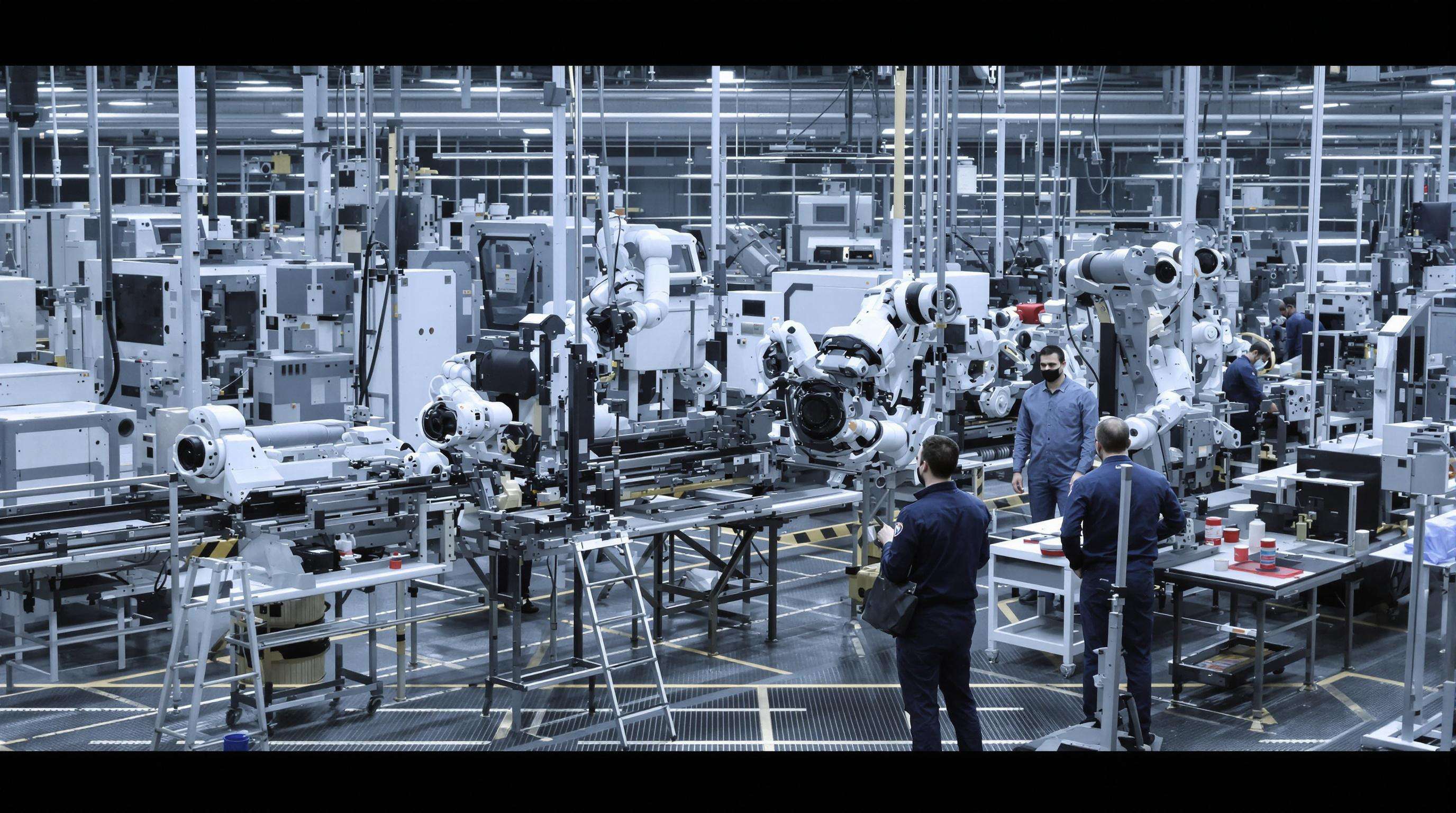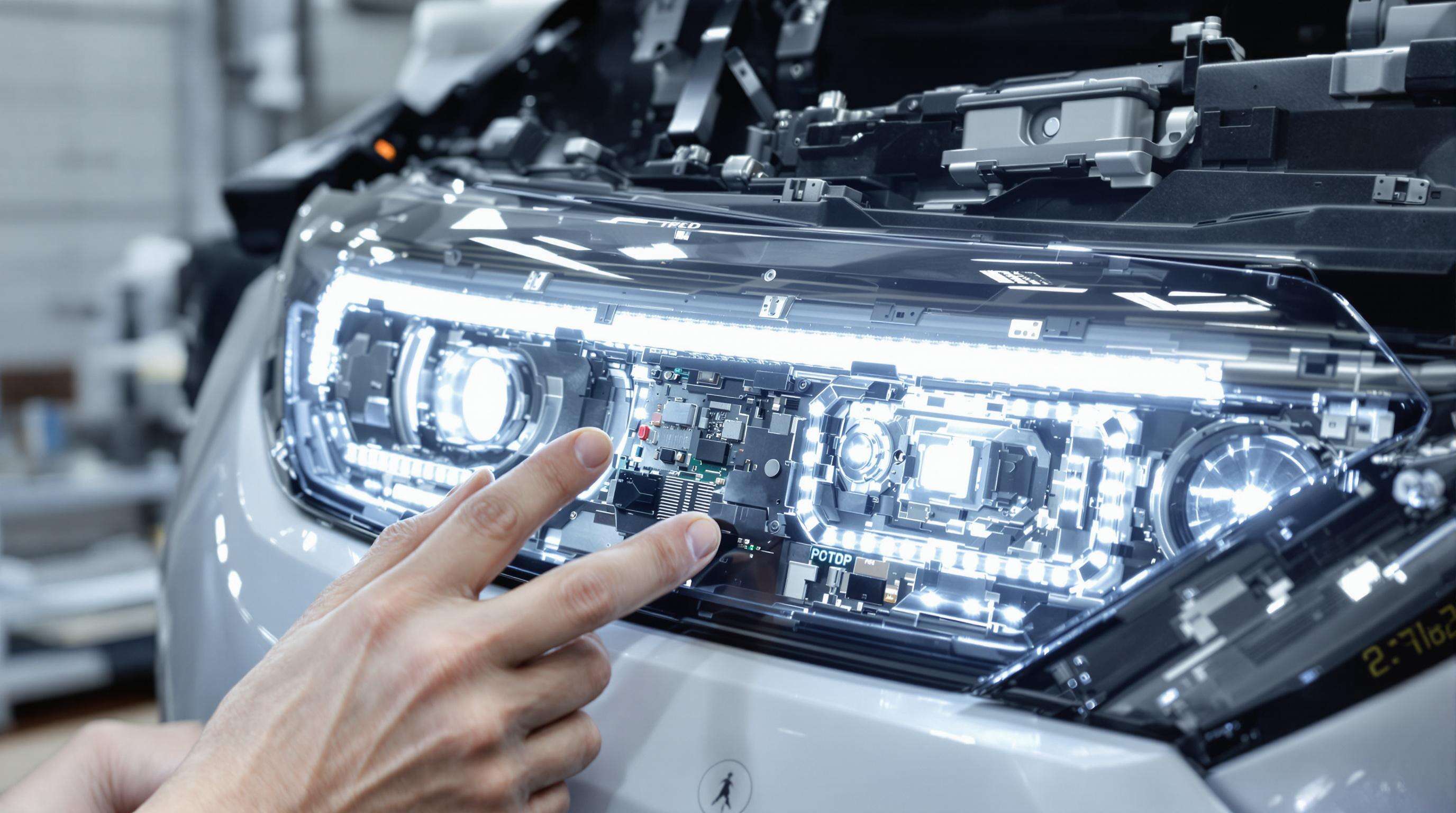Essential Factors When Wholesale Purchasing Car Lamp Assemblies
Evaluating Supplier Reliability for Car Lamp Assemblies
Assessing Supplier Track Record and Industry Reputation
Most people shopping for car lamp assemblies look for suppliers who have been around for at least five years according to Automotive Components Quarterly 2023 survey results. About 7 out of 10 buyers check how long a company has actually been operating before making purchases. One thing that stands out when evaluating quality parts is whether they carry IATF 16949 certification. This isn't just some fancy sticker it represents meeting strict international standards where defects must stay under 0.1% in each batch produced. Want to know if a supplier really delivers? Take their customer testimonials and compare them against what shows up on sites like Thomasnet or Alibaba's verified reviews section. Pay special attention to whether products consistently meet specs and how quickly problems get resolved when things go wrong with orders.
Production Capacity and On-Time Delivery Performance
Good suppliers need to handle growing production demands while still meeting their delivery deadlines. The best ones hit 95% or better on-time delivery through several smart approaches. They track production in real time, keep extra stock of parts that customers want most, and have backup plans worked out with nearby logistics partners when things go wrong. A recent Deloitte report from 2023 found something interesting too suppliers who had digital supply chain systems saw their lead times become much more predictable, cutting down variability by around 34 percentage points compared to companies stuck with old fashioned paper-based methods.
Verification Strategies Before Contracting
Conduct unannounced site audits to evaluate critical operational areas:
| Audit Focus | Critical Checkpoints |
|---|---|
| Technical Capability | Mold precision (<0.02mm tolerance) |
| QC Infrastructure | Spectral analysis for light distribution |
| Compliance | ECE R112 or SAE/DOT certification tests |
Request sample batches for accelerated life testing under simulated conditions—5 years’ worth of vibration, thermal cycling, and moisture exposure. Additionally, assess financial health using third-party reports such as Dun & Bradstreet ratings to ensure long-term stability and partnership viability.
Ensuring Quality Control in Car Lamp Assembly Manufacturing

Key International Certifications: ISO and IATF Standards
Manufacturers certified under ISO 9001 and IATF 16949 exhibit 22% fewer defects in car lamp assemblies than non-certified counterparts (Automotive Manufacturing Report 2024). These standards enforce strict controls over material traceability, process documentation, and corrective action systems, with specific requirements for heat resistance, waterproofing, and photometric performance in automotive lighting.
In-Line and Final Inspection Processes for Defect Prevention
Modern manufacturing setups now rely heavily on automated vision systems that check around 15 to 20 key measurements for each assembled unit while it's being built. When it comes time for final inspection, manufacturers run through several rigorous tests including thermal cycling and photometric analysis just to make sure everything meets those strict SAE and ECE standards for light distribution. Plants that have invested in coordinate measuring machines (CMMs) specifically for aligning reflectors see some pretty impressive results too. These facilities actually experience about a third fewer returns than their counterparts still relying on old school manual calibration methods. Makes sense when you think about it really, since precision matters so much in automotive lighting applications.
Balancing Cost and Quality in Mass Production
Although LED modules cost 18–25% more than halogen equivalents, their 50,000-hour lifespan significantly reduces warranty claims and replacement costs. Material choices such as polycarbonate over glass improve durability during shipping while maintaining optical clarity. Modular designs from progressive suppliers allow cost-effective upgrades as lighting technologies evolve, supporting long-term adaptability.
Optimizing Cost Management in Wholesale Sourcing
Total Cost of Ownership vs. Unit Price Analysis
When it comes to smart buying decisions, companies are looking beyond just what something costs at first glance. Take lighting components for example halogen parts might seem like a bargain at 40% less initially, but when we run the numbers through our predictive models, LEDs actually last about twice as long (around 62%) and need way fewer repairs too roughly 34% less maintenance work over five years. Most organizations have started adopting these comprehensive cost evaluation methods across departments. These frameworks consider everything from power consumption to whether the components will fit with future car designs and what happens when they eventually get thrown away. According to recent research from Ponemon Institute back in 2023, this approach helps businesses save somewhere around $740k on those unexpected expenses that pop up throughout a product's lifespan.
Volume Discounts and Long-Term Contract Benefits
Bulk purchasing agreements typically deliver 18–25% savings on car lamp assemblies, with tiered pricing starting at 5,000-unit orders. Multi-year contracts provide additional savings of 7–12% by locking in material costs, a crucial advantage for LED components, which face quarterly raw material price fluctuations of 9–14%.
Price Trends: LED vs. Halogen Components
The cost to put together halogen parts has dropped about 23% each year lately, which beats the roughly 11% price drop we've seen for LEDs according to industry reports from 2023. Still, most businesses are moving toward LEDs fast. The market for LEDs is expanding at around 31% per year because they save so much money on electricity over time - about 78% less than halogens. Plus, LEDs work really well with modern car tech systems in about 90% of cases, and they just don't break down as often either, cutting warranty issues by about 60%. These days, when companies buy lighting components, they're spending between 55 and 60% of their budget on LEDs. They still keep some halogen stock around though, mainly for older vehicles that need repairs but aren't getting replaced anytime soon.
Building Strategic Vendor Relationships for Sustainable Supply
Establishing Trust Through Transparent Communication and KPIs
Building solid relationships with suppliers really comes down to clear communication and keeping track of performance against around 8 to 12 important metrics. Defect rates matter a lot too, especially for top tier customers who expect them to stay below 0.2%. Sustainability progress is another big one these days. Most forward thinking companies get together every three months for business reviews where they look at shared dashboards showing all this data side by side. Interestingly enough, research shows that about seven out of ten procurement departments now tie their contracts getting renewed to actual proof of better CSR practices. When suppliers start using more recycled materials for instance, it actually cuts down carbon emissions throughout the whole supply chain somewhere between 18% and 22%, according to some recent analysis from PwC on sustainable procurement methods.
Co-Development Opportunities with Key Suppliers
Smart companies are working closely with their suppliers these days on research projects that focus on things like headlights that adjust when turning corners and lenses that resist getting fogged up from moisture. When businesses team up this way, they can split the costs of making tools needed for prototypes. One car manufacturer actually saved around 37% on prototype expenses through this approach while developing new modular LED light housings together with their supplier partners. As long as everyone signs those non-disclosure agreements first, the manufacturers still keep control of important intellectual property stuff related to how heat gets managed inside the lights. Plus, getting products to market faster becomes possible for features that make vehicle lighting systems smarter and more responsive to driving conditions.
Adopting Future-Ready Sourcing Strategies for Car Lamp Assemblies

Industry Shift Toward Integrated and Smart Lighting Systems
The car lighting industry isn't just about separate parts anymore but moving toward complete systems that actually talk to the rest of the vehicle. According to a recent Frost & Sullivan study from 2024, around two thirds of top suppliers are already making light assemblies with built-in sensors that adjust beams automatically based on driving conditions. What does this mean for manufacturers? They need folks who know their way around tiny circuits and how to connect everything through CAN buses. When looking at potential suppliers, companies should really focus on those experimenting with OLEDs and laser projection tech. These newer options save roughly 30% in power consumption when compared against old fashioned halogen lights, which makes them both environmentally friendlier and cheaper to run over time.
Aligning Procurement with R&D and Design Innovation
When companies get their procurement teams working hand in hand with engineering departments, they often find themselves getting first dibs on cutting edge materials such as those polycarbonate-silica hybrids everyone's talking about lately. These super stable compounds can make LEDs last around 15,000 hours which sounds impressive until you realize it takes anywhere from 18 to 24 long months just to get them certified for use. Getting suppliers involved early makes all the difference though. A recent study by SAE International back in 2023 showed something interesting: firms that coordinated their buying practices with research and development work saw their prototype testing phases speed up by about 22 percent. Makes sense really, since nobody wants to wait forever when time to market matters so much these days.
Mitigating Risks Through Supplier Base Diversification
The ongoing geopolitical instability means companies really need to have backup plans when it comes to getting those crucial parts like LED driver ICs and precision reflector molds. According to Resilinc's latest report from 2024, factories that managed to secure at least three different suppliers for their light emitting modules saw about a 41 percent drop in production shutdowns compared to previous years. Spreading out manufacturing across regions works wonders too. Many businesses are now bringing back around 20 to 30 percent of complex assembly work closer to home. This approach strikes a good middle ground between keeping costs down and making sure the supply chain doesn't fall apart during crises.
Frequently Asked Questions
What certifications should I look for when choosing a supplier for car lamp assemblies?
Look for suppliers with ISO 9001 and IATF 16949 certifications, which ensure strict quality controls and fewer defects in car lamp assemblies.
How can supplier reliability impact production?
Reliable suppliers better handle growing production demands and meet delivery deadlines. They often use digital supply chain systems to improve lead time predictability.
What are the benefits of LED car lamp assemblies over halogen?
LEDs have a longer lifespan, reduce warranty claims and replacement costs, and are more energy-efficient compared to halogen assemblies.
Why is supplier base diversification important?
Diversifying suppliers helps mitigate risks associated with geopolitical instability and reduces production shutdowns by spreading manufacturing across regions.

